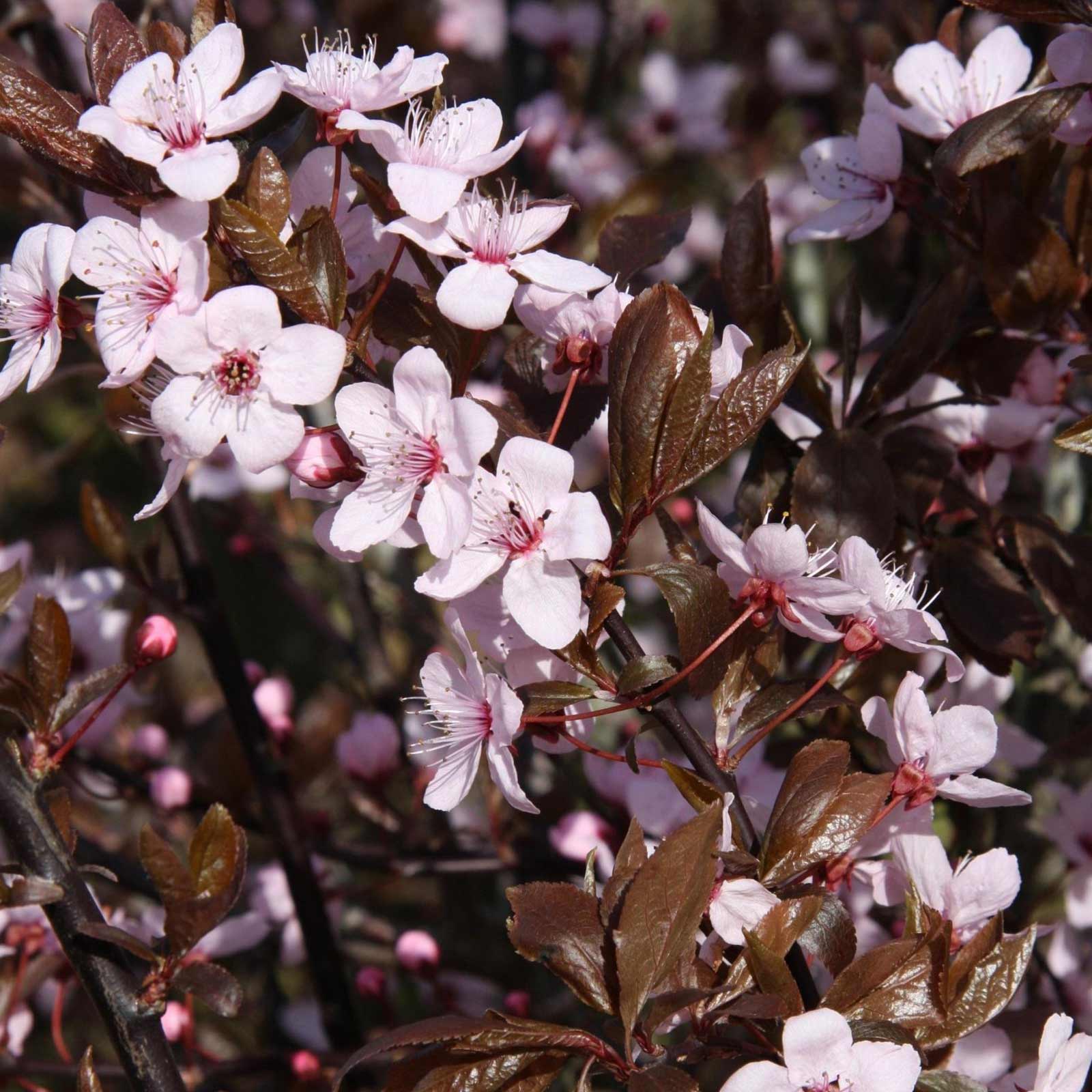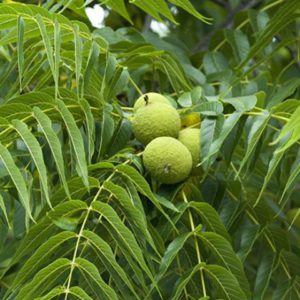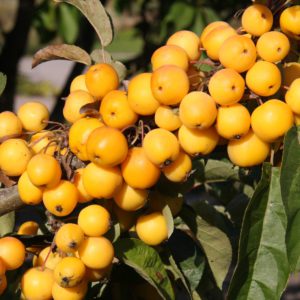Prunus cerasifera Nigra / Purple Plum
Price range: €180.00 through €350.00
Frequently Bought Together




Description
Quick Facts
- Common Name: Black Cherry Plum, Purple-Leaved Plum
- Botanical Name: Prunus cerasifera ‘Nigra’
- Plant Type: Deciduous tree
- Mature Height: 6-8m
- Mature Spread: 4-6m
- Flowering Period: March to April
- Flower Colour: Pink flowers fading to pale pink
- Foliage: Deep purple-black leaves throughout summer
- Hardiness: RHS H6 (hardy)
- Soil Requirements: Moist, well-drained, tolerates most soil types
- Aspect: Full sun (essential for best foliage colour)
- Maintenance: Low to moderate
Description
Experience the dramatic beauty of Prunus cerasifera ‘Nigra’, the stunning Black Cherry Plum that brings exceptional colour contrast, spectacular spring blossom, and year-round architectural presence with its deep purple-black foliage. This outstanding ornamental plum offers remarkable qualities—rich deep purple to almost black foliage that emerges dark red in spring and deepens throughout summer creating striking colour contrast and dramatic impact in the garden, masses of delicate pink flowers that smother the bare branches in early spring before the leaves emerge creating breathtaking displays of blossom, occasional small edible purple-red plums in late summer that provide ornamental interest and can be used for cooking and preserves, and compact rounded form with manageable size making this perfect for small to medium gardens where dramatic foliage colour and spring blossom are desired, making this one of the finest and most popular purple-leaved trees for creating bold contrast, romantic spring beauty, and year-round drama.
Throughout early spring (March-April), this captivating tree becomes absolutely transformed when the bare branches become smothered in masses of delicate pink flowers measuring 2-3cm across with five petals that open from darker pink buds. The flowers appear before the leaves emerge, creating spectacular displays where the entire tree appears to be covered in a cloud of pink blossom. The overall effect is breathtaking—pure romantic beauty that signals spring’s arrival. As the flowers fade, the new foliage emerges in rich dark red to burgundy, then deepens to spectacular deep purple to almost black throughout summer. The leaves are oval to obovate, measuring 4-7cm long with finely serrated edges and a glossy finish that catches the light beautifully. The dark foliage creates stunning contrast against green plants and provides a dramatic backdrop in mixed plantings. In late summer, the tree may produce small edible plums measuring 2-3cm diameter in purple-red with yellow flesh—these are tart but excellent for cooking, jams, and preserves. The compact rounded crown creates attractive form, and the dark bark adds winter interest.
This remarkable cultivar is a selected form of the Cherry Plum or Myrobalan Plum (Prunus cerasifera), which is native to southeast Europe and western Asia. ‘Nigra’ was introduced in the late 19th century and has become one of the most popular purple-leaved trees for gardens. The species name ‘cerasifera’ means cherry-bearing, referring to the cherry-like fruits. Hardy and adaptable, this plum thrives in Irish conditions, tolerating urban pollution, exposure, a wide range of soil types including clay and chalk, and coastal locations. IMPORTANT: Best foliage colour develops in full sun—in shade the leaves turn greenish-purple and lose their dramatic impact. Fast-growing and establishing quickly, providing impressive colour within just a few years. The compact size makes this ideal for smaller gardens whilst still providing maximum visual impact.
Create stunning compositions by planting as spectacular specimen trees in lawns, mixed borders, or prominent positions where the dramatic purple foliage and spring blossom create bold contrast. Exceptional in contemporary gardens where the dark foliage provides striking contrast against pale gravel, light-coloured paving, or white-painted walls. Works beautifully planted with silver-leaved plants (Stachys, Artemisia, lavender), pink or white flowering perennials, or lime-green foliage (Alchemilla, Euphorbia) for maximum contrast. Magnificent as focal points, street trees, or planted in groups for enhanced impact. The purple foliage creates depth and drama in mixed plantings and prevents gardens from appearing too green. Perfect for small to medium gardens where bold colour and spring blossom are desired without excessive size.
Caragh Garden Notebook
Planting: Space trees 5-6m apart if planting multiples, or allow 6-7m for specimen placement to accommodate the mature spread. Plant bare-root trees from November to March (ideal), or container-grown specimens year-round. Dig holes twice the width of the root ball and incorporate organic matter. Plant at the same depth as the nursery soil mark. Stake for the first 2-3 years. Water thoroughly and mulch around the base. CRITICAL: Choose positions in full sun—this is essential for best purple-black foliage colour. In shade or partial shade, the leaves turn greenish-purple and lose their dramatic impact.
Soil Preparation: Thrives in moist, well-drained soil with pH 6.0-7.5. Tolerates a wide range of soil types including clay, loam, sand, and moderately acidic to slightly alkaline conditions including chalk. Prefers moisture-retentive, fertile conditions but adapts well to average soils. Dislikes waterlogged sites. Tolerates urban pollution, exposure, and coastal conditions. Best foliage colour and growth occur in full sun with reasonable soil and consistent moisture during establishment.
Container Growing: Can be grown in large containers (minimum 50-60cm diameter) using soil-based compost for several years, creating spectacular patio features with purple foliage and spring blossom. Water regularly during growing season and feed in spring with slow-release balanced fertiliser. Position in full sun for best foliage colour. However, for best long-term health, maximum foliage colour, and to achieve the full rounded form, plant out into the ground where the root system can develop fully.
Seasonal Care: Requires minimal pruning—the naturally rounded form develops without intervention. Remove only dead, damaged, or crossing branches in mid to late summer (July-August) when dormant—never prune in winter or early spring as Prunus species are susceptible to silver leaf disease and bacterial canker when pruned during wet, cold weather. If shaping is needed, prune immediately after flowering in late spring. Apply slow-release balanced fertiliser in early spring if desired. Mulch annually with organic matter. Water during dry spells in the first 3-5 years until established. Watch for aphids on young growth (can cause leaf curl), and monitor for silver leaf disease (purple staining on cut wood) or bacterial canker (oozing lesions on bark)—prune out affected branches promptly in summer.
Propagation: Cannot be grown true from seed as this is a selected cultivar that will not come true from seed and will revert to green-leaved forms. Professional propagation is by grafting or budding onto Prunus rootstock (typically P. cerasifera or St. Julien A) in winter or summer. Softwood or semi-hardwood cuttings in summer can occasionally be successful with rooting hormone and mist propagation. Home gardeners should purchase nursery-grown grafted specimens for guaranteed quality, reliable purple-black foliage colour, and characteristic growth habit.
This dramatic beauty is absolutely stunning—that deep purple to almost black foliage creates such bold contrast and striking impact! The masses of pink spring blossom smothering the bare branches are breathtaking—pure romantic beauty. Fast-growing, compact size perfect for smaller gardens, exceptionally hardy, and tolerates urban pollution and challenging conditions brilliantly. Remember full sun is essential for best foliage colour—absolutely worth it for that dramatic purple-black impact. A true showstopper that adds depth and drama to any garden!





